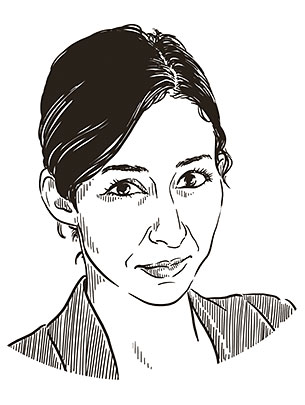If children held the purse strings.
Text: Christoph Dieffenbacher
Investments are not always made in an entirely rational manner. However, an experiment by an economist at the University of Basel shows that children already have the capacity to evaluate simple probabilities.
A well-known proverb tells us it is a bad idea to put all our eggs in one basket. This paradigm can be traced as far back as the Talmud, written around 200 AD, according to which “it is advisable for one that he should divide his money in three parts, one of which he shall invest in real estate, one of which in business, and the third part to remain always in his hands.” In today’s financial and investment markets, this strategy is known as diversification. Experts invariably advise investors to put their money in a broad range of assets in order to maximize their potential gains and minimize their risk of loss.
There is a general consensus that when applied to economic activity, this strategy boosts competition, innovation and growth. The best defense against the vagaries of the market is considered to be a diversified portfolio. However, the problem is that many people do not act on this advice, says Professor Ola Mahmoud, Assistant Professor of Corporate Finance at the University of Basel: “The notion of rational diversification is often disregarded by biased investors in the financial markets.” Instead, she says, many investors stick to an excessively narrow range of simple products – thereby exposing themselves to a considerable degree of risk.
The professor, who was born in Cairo and spent part of her childhood in Germany, holds a doctorate in mathematics and has professional experience as an investment strategist. She observes that many people rely on “naive” models which do not take probabilities and correlations into account. Even the renowned originator of the theory of diversification, Harry Markowitz, is said to have simply divided his retirement investments equally between bonds and equities. The famous economist justified this decision on psychological grounds: “My intention was to minimize my future regret.”
According to Mahmoud, people’s tendency not to invest optimally can often be explained in terms of psychology and behavioral economics. To find out how children make decisions, she conducted an experiment which she describes as “the first of its kind”, involving dice with faces painted in two colors in different proportions: while one die had three red and three blue faces, for example, another had five red faces. The young test subjects were told how the colors were distributed on a given die, after which they were instructed to bet on a color of their choice and roll the die. Correct bets were rewarded with coupons in the form of gummy bears. In this way, the 76 schoolchildren aged 6 to 12, with no particular background knowledge in financial mathematics, had to decide which betting strategy would yield the most sweets.
Mahmoud was surprised by the results: “The children only applied the simple strategy when it was the theoretically optimal thing to do,” she says: “In other words, when the dice had an equal number of faces of each color, for example, making the chance of winning 50 %.” She had assumed that children would bet on a color even when it only matched one or two faces, but it turned out that the pupils were quite capable of figuring out which bets offered the highest chance of success.
According to Mahmoud, the dice-rolling experiments show that children are already equipped to intuitively engage with the phenomenon of risk and probability in a financial setting. She believes that the urge to diversify in the face of choice may be hard-wired into human behavior at a basic level, but subsides in adulthood for various psychological reasons. Incidentally, two of the older boys came up with a creative way of hedging their risk: They agreed to pool their winnings from the various tasks and divide them equally, the researcher recalls with a smile: “It’s another possible approach, and one that shows just how ingenious kids can be.”
More articles in the current issue of UNI NOVA.

